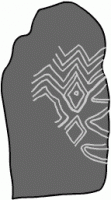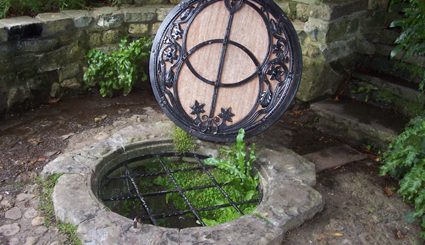St Neot Holy Well
The holy well at St Neot was once said to be the home of two holy fishes.
There is a story attached to these fish, it is said that one of the local priests had a vision, in which an angel told him that if he took one fish from the well every day to eat, there would always be a replacement the next day.
One day the priest was bed ridden and an over zealous servant cooked him both fishes. The priest told the servant that he must throw both of the fishes back into the well, whereupon they were miraculously restored to life.
Directions: To the West of St Neot on a track.




Re: St Neot Holy Well
St. Neot’s Well, not far west from the church, was arched over in granite by the late General Carlyon, the old arched covering), having fallen in many years ago. St. Neot, said to have been learned, eloquent, and intelligent, was a monk of Glastonbury, and supposed to have been brother to Alfred the Great, contemporary with St. Dunstan ; he died 8go. Many sought his prayers, either for relief of their infirmities, or for spiritual comfort. Wearied of his fame he retired to his hermitage here, with one attendant, Barius. It was in this well that he stood up to his chin daily, and chanted the Psalter throughout.
Many are the wild tales of his miraculous performances at his "holy well," which an angel stocked with fish as food for St. Neot, but on condition that he took only one for his daily meal. The stock consisted but of two–some accounts say three–but of two for ever, like a guinea in a fairy purse. It happened, however, [30] that the saint fell sick and became dainty in his appetite; and his servant, Barius by name, in his eagerness to please his master, cooked the two, boiling the one and broiling the other. Great was the consternation of St. Neot; but, recovering his presence of mind, he ordered the fish to be thrown back into the spring, and falling on his knees, most humbly sought forgiveness. The servant returned, declaring that the fish were alive and sporting in the water, and when the proper meal bad been prepared, the saint on tasting it was instantly restored to health. Some fox-hunters one day entered the wood, the retreat of the saint, who fled, and lost his shoe in his hurry; the fox stole it, and was in consequence cast into a deep sleep, and died. At another time St. Neot was praying at this well, when a hunted deer sought protection by his side. On the arrival of the dogs the saint reproved them, and, behold ! they crouched at his feet, whilst the huntsman, affected by the miracle, renounced the world, and hung up his bugle-horn in the cloister. Again, the oxen belonging to the saint had been stolen, and wild deer came of their own accord to replace them, and returned to their woods at night, until the stolen bullocks were restored. When the thieves beheld St. Neot ploughing with his stags they were conscience-stricken, and returned what they had stolen. Such stories as these are represented in the stained-glass window, c. I500-1530, and many more may be gathered from the country people, who affirm that the church was built by night, and the materials brought together by teams of two deer and one hare. They also show in the churchyard the stone on which the saint used to stand to throw the key into the keyhole, which had been accidentally placed too high. (St. Neot was of small stature, and either this lock or another was in the habit of descending, so that his hand could reach it.)
The first three mornings in May are those on which patients should visit this well. The old name of the parish was Neotstow, and it is said to have been in a church on this site that King Alfred was praying (during a hunting expedition into Cornwall) when a change took place in his life.
[The Legendary Lore Of The Holy Wells Of England by Robert Charles Hope (1893)]